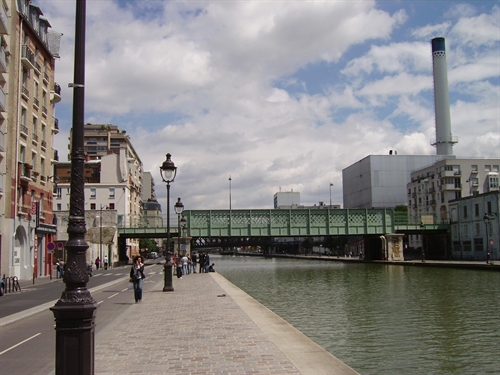
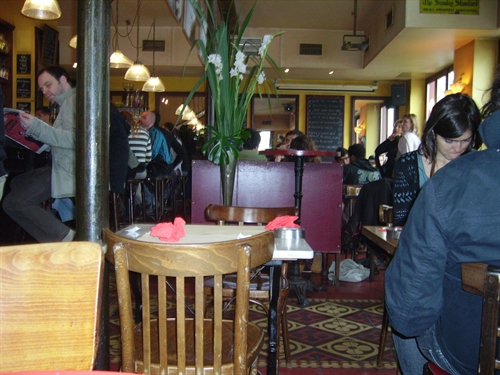
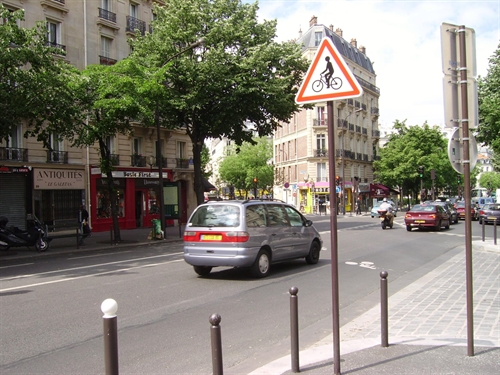
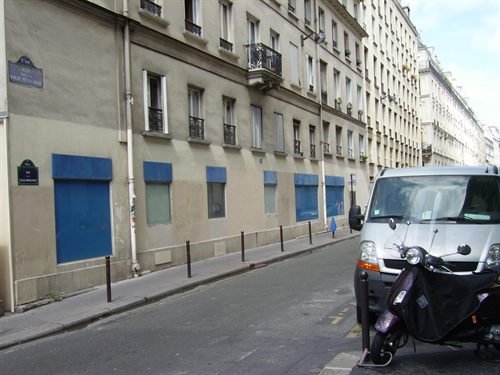
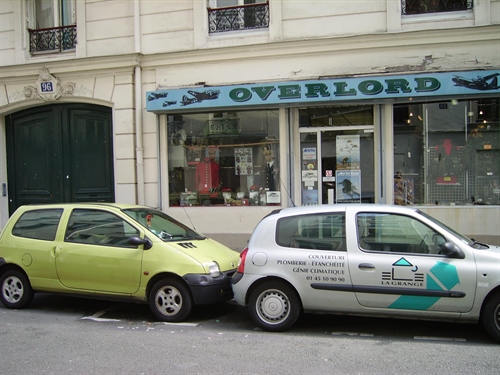

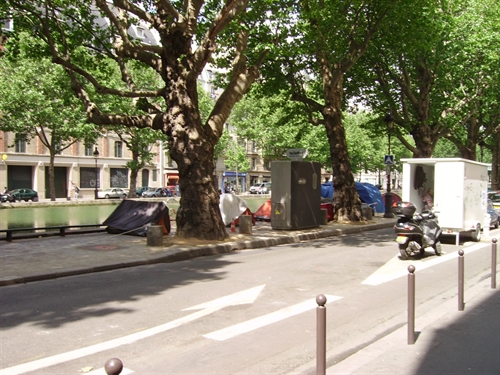
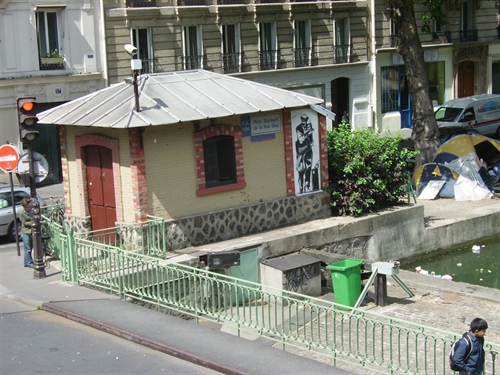

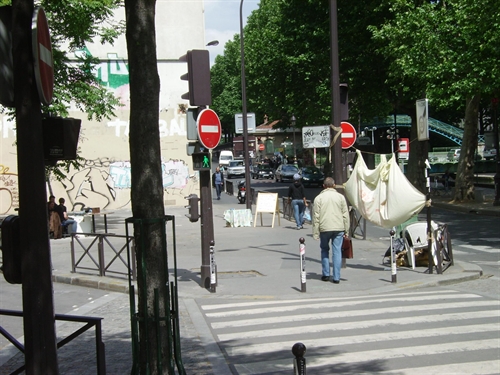
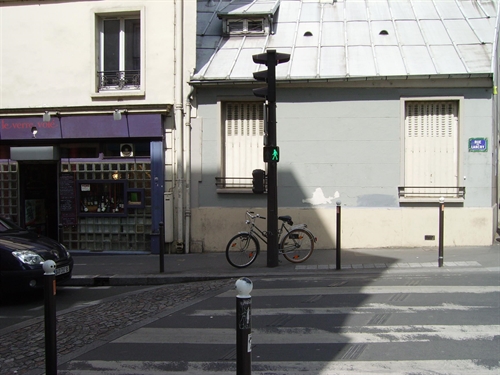
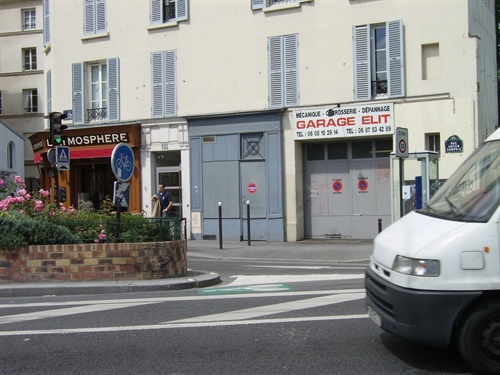
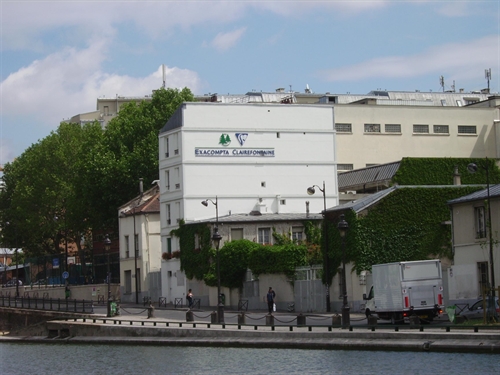

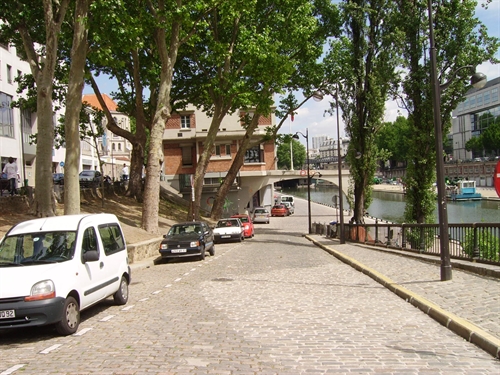
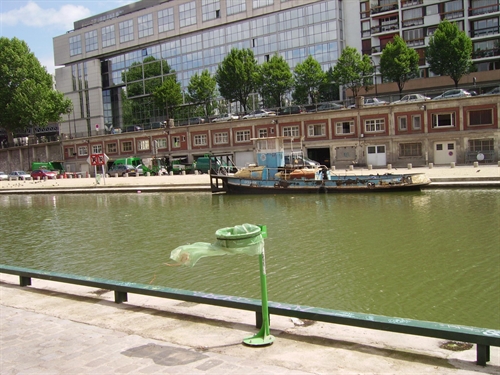
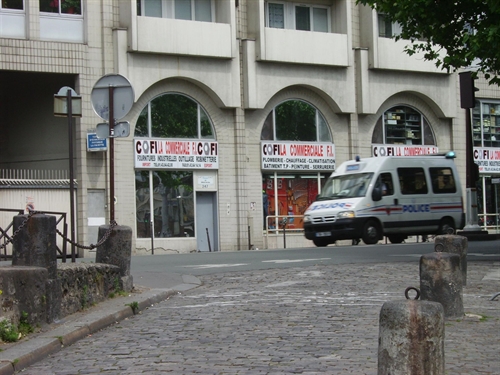
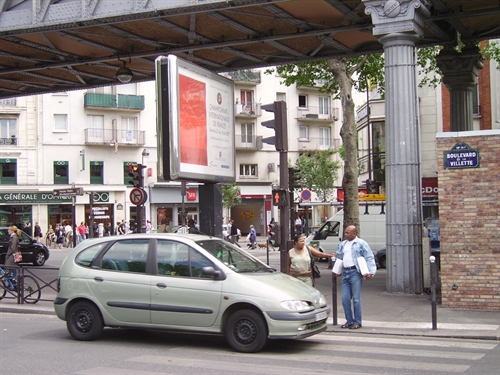

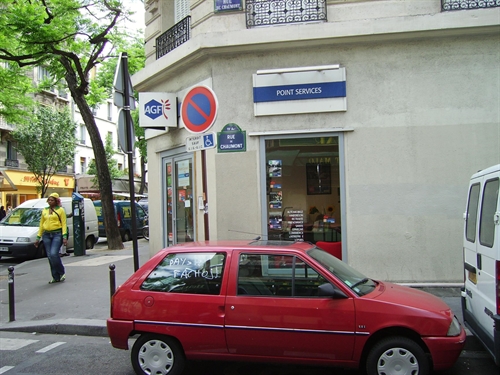
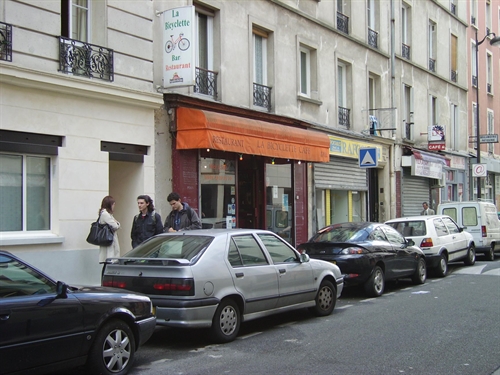
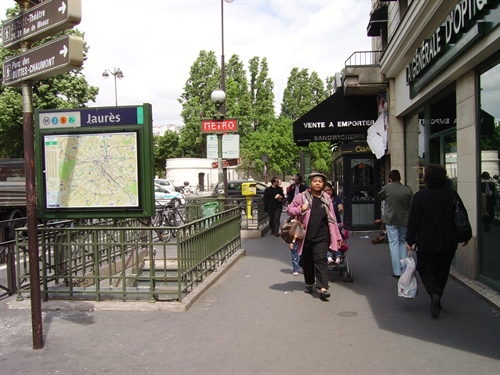
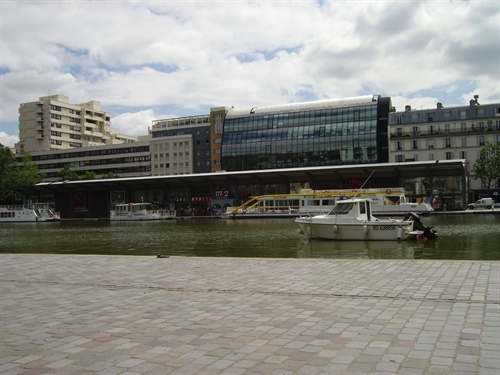
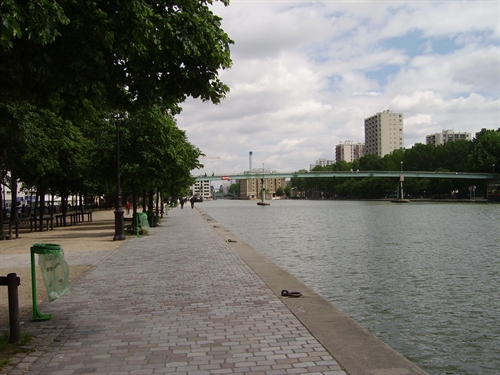
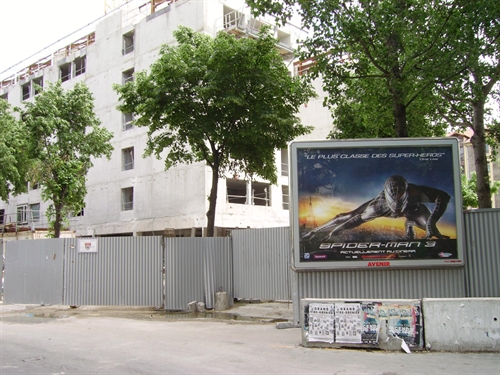
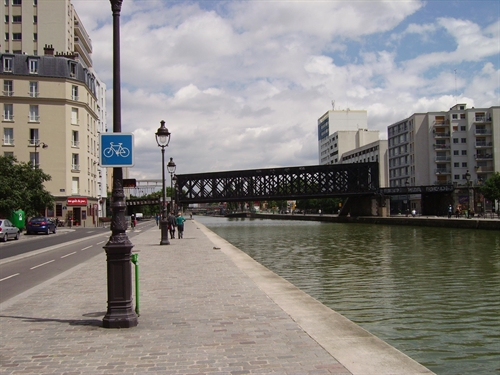
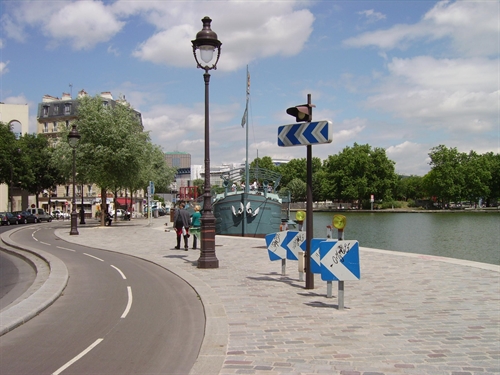
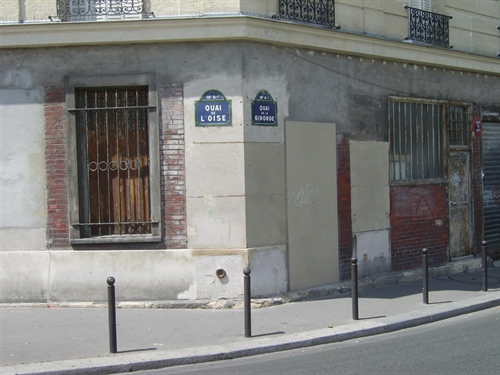
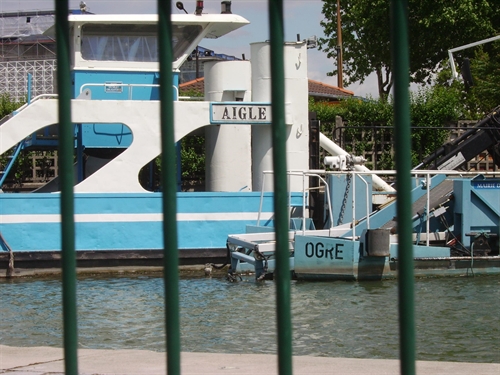

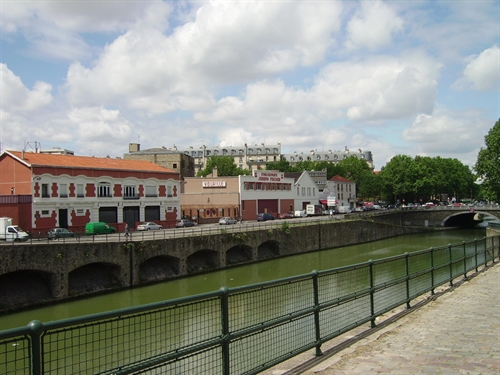
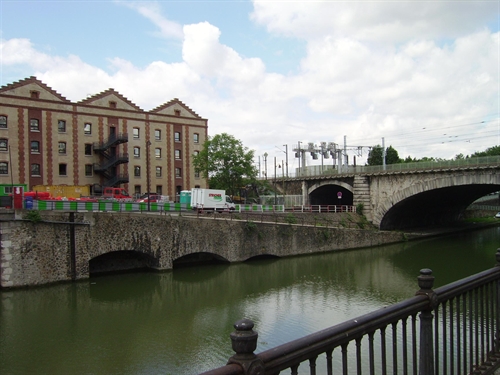
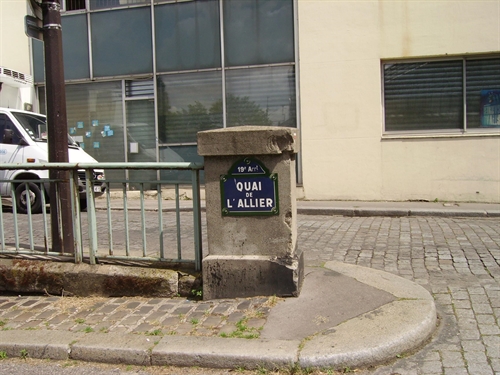

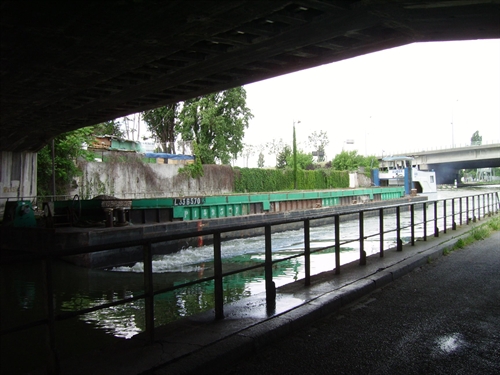
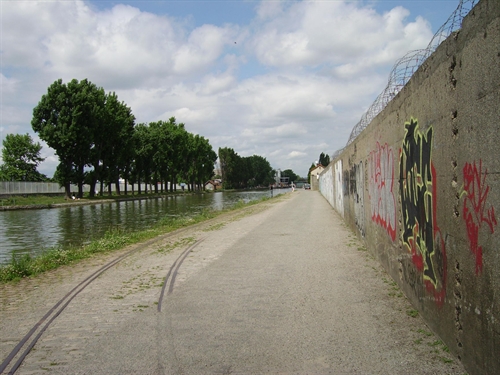
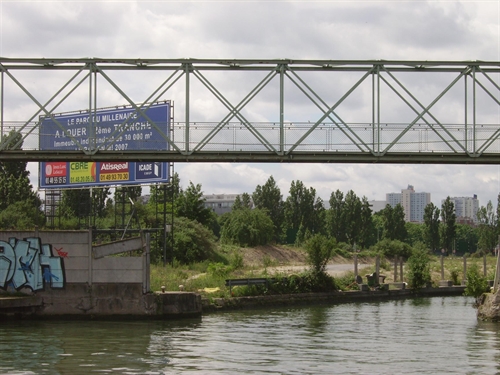
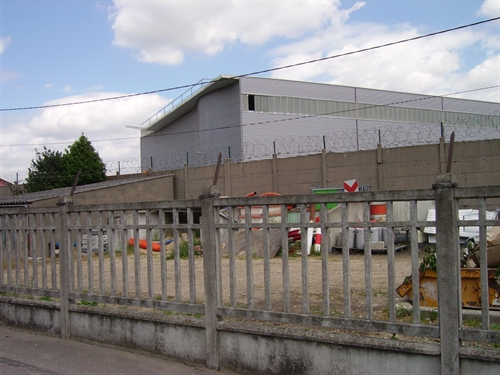
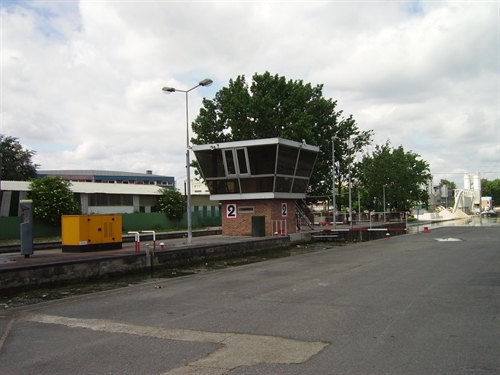

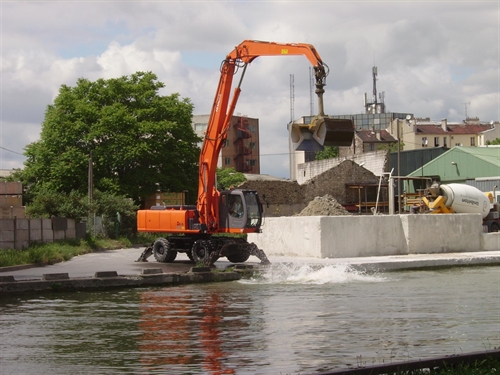
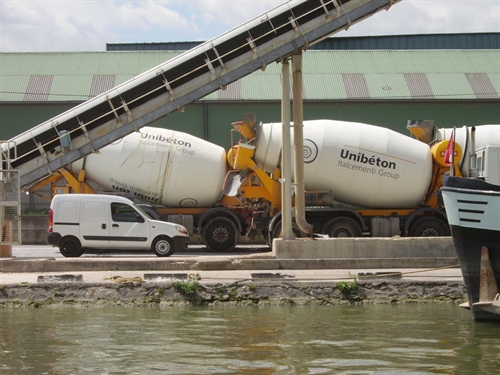
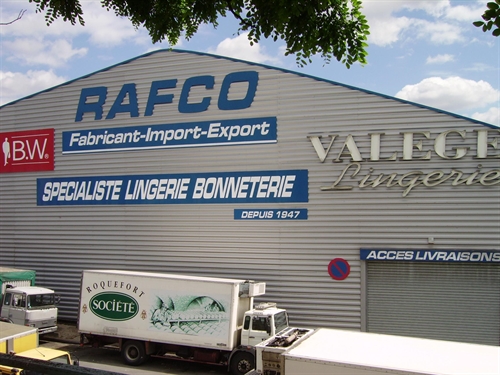
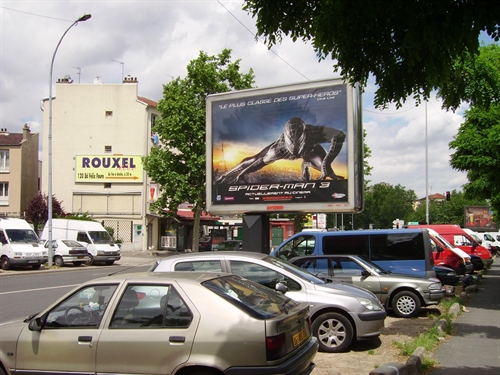
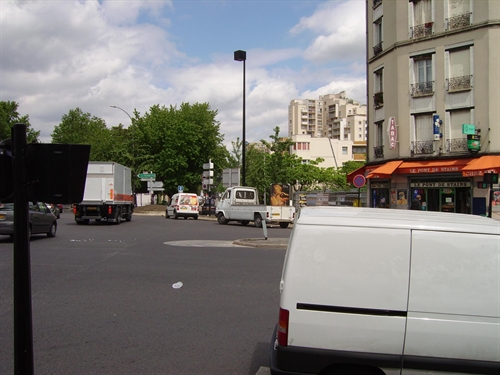
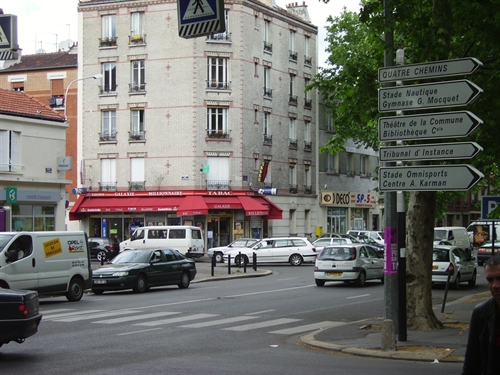
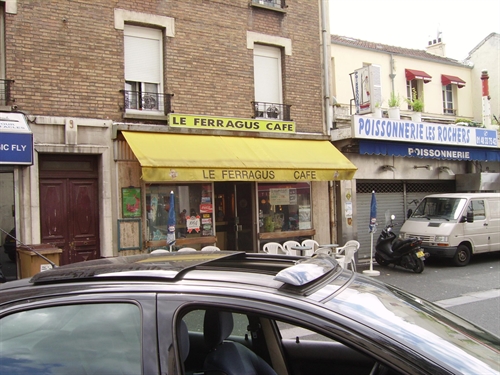
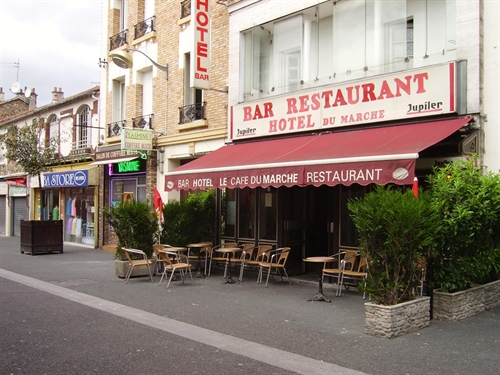
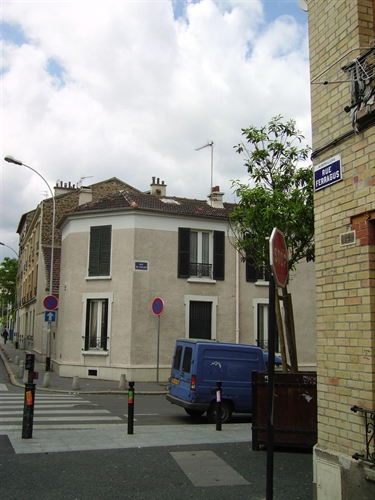
They met not far from Place de la République. She was sitting in front of him. Behind her, a man at the bar was reading a newspaper running as a headline: Désir d’ouverture. Also behind her, there was a bouquet of nasturtiums almost wholly hidden by her face.
They got out. A sedan stopped to give way to them. They lingered over the front window of an antique shop, then, not far from it, they entered a photography store so that he could buy a memory card for his camera.
Rue de la Folie-Méricourt, a man came to the balcon and threw a blue towel that finally landed on a post.
Further, in front of a store of military bibelots, across the street, there was a Russian restaurant, named Isba, next to a travel agency displaying in the window a promotion for travelling to Naples.
While arriving on the canal Saint-Martin, a woman or a man appeared at the window of a restaurant, upstairs, look them, then faded away.
It was not raining yet. The poor of the city had established settlements along the canal. Since then, as we know, tents are gone. Tired of waiting, poor rebelled. The better-off have been driven out or, scared, they ran away. The city, like most urban centres, is now affected by an exodus phenomenon of those who then possessed it.
When these photographs were taken, an action of the forces of order was expected. Some people, under threat, preferred to reach housing accommodations that the single State had improvised. There was no sign of revolt at that time. Obviously, today, it becomes easy to recognize in this teenager, in the lower right corner, a sign suggesting the disruption in the power relations that was going to operate between the social classes.
Similarly, at the intersection of rue Dieu and quai de Valmy, when, shortly after she disappeared, he returned to the places of their walk, he was far from thinking that the skull displayed over the black scooter announce the end of a world, this one they had thought to know.
On their right, the rue de Lancry ran along the canal. In the shade of a tree, a fortune-teller consulted the cards. On a panel spread out on the pavement, she announced the prices, rather cheaply by the way. He remembers, as this picture suggests, that passers-by stopped in front of the panel, then cast a glance toward the fortune-teller, as if they were thirsty for a low-cost future.
The future could also be read in this bicycle hanging on a traffic light, as we shall see it with the next image.
At number seven of rue Lucien Sampaix, the owner of the bicycle got out to fetch it. At this point, several questions arise: why did this man not hang his bicycle to the nearest traffic light, opposite to the cafe? But this man, was he the owner of the bicycle? And this man, did he come out of his apartment? If that was the case, does he still reside there or was he driven out as the others? Is he still alive or was he, as perhaps those who lingered before the panel of the fortune-teller, a victim of violence that affected all urban centres?
They continued their walk. The sky was overcast. It threatened to rain. They sought shelter.
The Chaland was crowded. As the awning of the terrace was not open, they move forward to another cafe.
She knew one nearby.
This cafe was called the red bicycle.
They crossed the boulevard de la Villette,
as a fire truck came hurtling from place Stalingrad.
In front of a store, a woman wearing a veil and begging for money was expelled from the sidewalk by a security guard.
'Country of fascists' yelled a young man seeing the scene, but yet not intervening.
They arrived at the blue bicycle as it began to rain. They remained there for almost an hour while drinking a red wine, called 'A toi à moi' suggested by the waitress. When leaving, a girl, arms crossed, watched them go by.
They walked down the rue de Meaux to the metro station Jaurès. More than a year later, as an exceptional climatic condition were affecting the whole European continent, the occupants of the tents set up along the canal took refuge inside this metro station. The brutality with which the police tried to dislodge them triggered a chain reaction that would lead to the neighbourhood unrest, then to the insurrection that would affect all the cities of the country.
This glass building is now a ruin. It housed a newspaper that no longer appears. Cinemas located on the banks have also closed. When they walked past, men women children were waiting. Posts fitted with a strap roller queued up the future spectators.
In front of a barge fitted with a dredge, similar to the one we saw within the fifteenth picture, transparent trash bags swayed in the wind.
In front of a building under construction, a barge had been turned into a theatre.
A woman, walking on the border of the bicycle path and the paved part of the embankment, passed by a movie poster. She looked at this poster.
They walked closer a bridge. This bridge was the exact copy of the previous one.
After the bridge, the canal turned off towards the right. In a bend, a barge, called 'Surprise', was moored.
Quai de la Gironde, a man came to the balcony, as we saw within the third image, and threw a blue towel that landed on the sidewalk.
They then wanted to cross the canal. They took a footbridge
after climbing over a security fence.
As we can see here,
they continued their walk,
along the canal
which took the name of Saint-Denis.
A launch of the river police went through a bridge as he wanted to kiss her.
They walked silently, at the edge of the canal, along a row of yews.
This path of yews opened on a park, called 'Millennium Park', and ended up composing a vegetal maze on the edge of offices buildings.
There were also big commercial areas now abandoned, vainly surrounded by barbed wire walls.
While coming past a detached house, it started to rain.
They sought shelter under the awning of front steps, whence they observed a galloping horse.
Later, as it stopped raining, they continued their walk and crossed some washerwomen.
Not far away, some laundry cars were parked.
As they moved away from the canal, they heard the sounds of a construction site.
Half hidden behind the movie poster they had already seen walking past the twenty-fourth image, a cement mixer truck was stopped.
In the middle of a crossroads, a white plastic bag, carried by the wind, ended up hanging a black pylon.
They were lost. This city was not the one they knew. They felt as they had entered into a future.
A future that opened itself with the appearance of the present.
They went up in a bedroom. An hour or two later, taking advantage of his sleep, she ran away.
She followed a street aimlessly. At the corner, she went upon a bus stopped. It was heading Place de la République. She caught that bus.